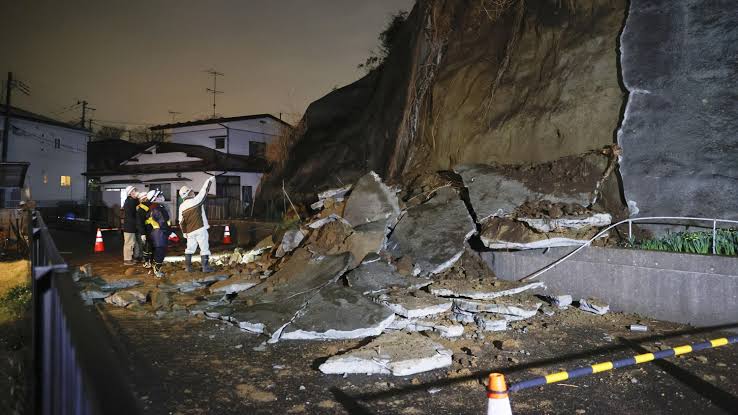The 7.4-magnitude earthquake off the coast of Fukushima derailed a bullet train, created highway breaches, and knocked items off store shelves.

TOKYO (Reuters) – Four people were killed and more than 100 injured in Japan on Thursday after a powerful earthquake rocked much of the east coast overnight and triggered a tsunami warning, authorities said.
The 7.4-magnitude quake off Fukushima derailed a high-speed train, opened cracks in highways and threw products off store shelves.
A tsunami warning for waves of up to one meter (three feet) in parts of northeastern Japan was lifted in the early hours of Thursday after authorities recorded water levels of up to 30 centimeters higher than usual in some areas.
Several minor tremors hit the region through Thursday morning, nerve-wracking just days after Japan marked the 11th anniversary of the region’s massive earthquake, tsunami and nuclear disaster.
The damage appeared relatively minor in a country with strict building codes designed to guard against the devastation of frequent earthquakes, and officials said there were no anomalies at nuclear power plants. Government spokesman Hirokazu Matsuno said four deaths had been reported, although an investigation was still ongoing to determine if they were a direct result of the quake.
Another 107 people were injured, he added. “We have received information indicating that there are no irregularities in the data from the Fukushima Daiichi and Daini nuclear power plants and the Onagawa nuclear power plant,” Matsuno said, referring to the plant closed in November. 2011 and two others in the region. TEPCO, operator of the Fukushima Daiichi power plant, said Thursday that its facilities were operating normally.
The quake struck just after 11:30 p.m. at a depth of 60 kilometers (37 miles), and minutes earlier it was preceded by a magnitude 6.1 quake in the same area, the Japan Meteorological Agency said. “We had two big earthquakes.
The first one was very big and was shaking a lot. I prepared to evacuate, and then the second, larger earthquake hit,” a city official from the city of Soma in Fukushima told AFP.
“I was on the second floor of a two-story house and I couldn’t stay still, it was very extreme.” Restoring electricity In the city of Shiroishi, workers were cleaning up damage at a supermarket, including products that had fallen off shelves and a partially collapsed ceiling. “It’s really ironic.
Exactly a year ago we also had an earthquake of a similar magnitude,” store worker Yoshinari Kiwaki told AFP. “When we felt the tremors last night, we already knew what we had to work on here tomorrow morning,” said the 62-year-old. It will take about a month before the store is operational again.
The tremors also shook the capital, temporarily plunging parts of Tokyo and other regions into darkness. Power outages hit around two million homes in Tokyo and elsewhere immediately after the quake, but power was gradually restored overnight.
About 30,000 households were still without electricity Thursday morning, and another 4,300 without water. Damage was reported elsewhere, including the collapse of a stone wall on the grounds of Sendai’s Aoba Castle and a derailed shinkansen bullet train north of Fukushima city. No one was injured in the derailment, but 75 passengers and three employees on board were stranded for four hours before they could escape the train.
Japan sits on the Pacific “Ring of Fire”, an arc of intense seismic activity that stretches across Southeast Asia and across the Pacific Basin.
The country is regularly hit by earthquakes, but the memory of the 2011 disaster that left 18,500 dead or missing, most of them due to the tsunami, still haunts.
Extensive decontamination has been carried out around the stricken Fukushima plant and exclusion zones now cover only 2.4% of the region, down from 12% previously, although the population of many towns remains well below what she was before.


